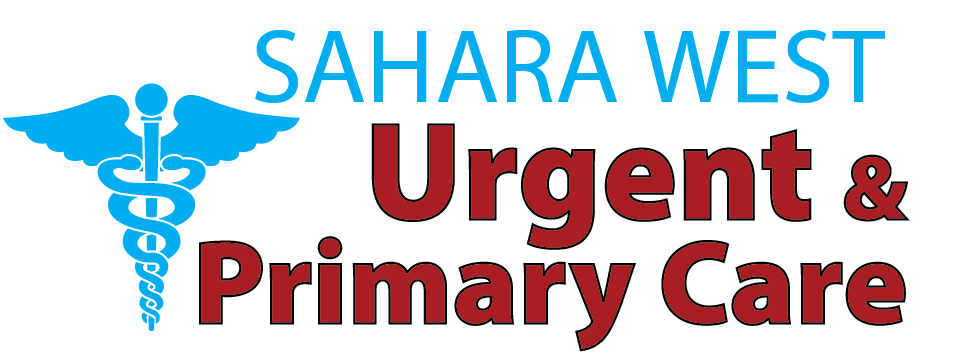Urgent care clinics offer an alternative to emergency rooms with low costs and quick access, which makes it an effective solution when acute illness or injury occurs during off-hours. However, one of the questions that most patients raise concerns whether urgent care visits are covered by insurance.
The short answer to that question is yes, most of the time. Nevertheless, how much it covers, the money that is paid out of pocket, and whether it can be supported through in-network providers may be different depending on your insurance scheme. This guide takes you through the coverage process, what to expect during check-in, and how you can make the most cost-effective decision.
Understanding What Urgent Care Is
Urgent care facilities are meant to treat healthcare problems that cannot wait but are not critical enough to be addressed in the emergency care facility. Most of the conditions handled by these clinics are not life-threatening, including sprains, minor cuts, infections, fevers, and allergies.
Most urgent care centers, such as national agencies NextCare, GoHealth, Carbon Health, and AFC Urgent Care, provide a walk-in option, online check-in options, and longer hours. They are the solution between your neighborhood doctor and the emergency departments, which means that they are an optimal solution to after-hours medical needs.
How Insurance Works for Urgent Care Visits
The majority of health insurance plans cover urgent care treatments, as well as your out-of-pocket expenses may be changed according to the type of plan, the insurance network of the clinic, and the fulfillment of your deductible.
Urgent care coverage is found in major provider plans, including Blue Cross Blue Shield, UnitedHealthcare, Aetna, Cigna and Kaiser Permanente. Nevertheless, although the visit is covered, you are likely to pay a joint payment or co-insurance. Such expenses tend to be cheaper when compared to costs incurred in an emergency room.
To take an example, you may have a Blue Cross Blue Shield urgent care copay of 50 dollars, but an ER visit may cost you 250 dollars or even more, depending on the plan. This is one of the reasons why the insurance agencies would want patients to use urgent care instead of emergency care in case it is not an emergency.
Understanding Copays and Out-of-Pocket Costs
The copay is the most imminent expense you are likely to incur when availing services at an urgent care center. Copay: A specific set charge imposed on a covered service that you would pay now and then, usually at the time of your visit.
The average costs of copays for urgent care are usually about 30-75 dollars, based on your insurance company and the insurance plan you are eligible fore. Your plan might have a requirement to satisfy the deductible of your plan first before it becomes contributory, and others will pay a small equivalent (copay) for emergency visits to the doctor.
Note that the out-of-network visits can be associated with steep fees that can consist of the entire service expenses in case the urgent care center does not accept your health insurance.
The Importance of In-Network Urgent Care Providers
It is necessary to attend an urgent care clinic in-network to avoid surprise medical bills. Providers in the network have contracts with insurance providers to offer their services at lower rates than having to spend money to full-service providers on your own.
Make sure that a center is in your network before visiting it. Most of the providers offer aids to assist with this in the form of directories, apps, and web locators. For instance:
- Use the UnitedHealthcare urgent care finder
- Check Aetna’s in-network clinic listings
- Search for BCBS urgent care locations near you
Facilities such as IU Health Urgent Care, Providence Immediate Care Sherwood, and WellStreet Urgent Care often appear in these databases if partnered with your insurance plan.
Ways to Check If Urgent Care Accepts Your Insurance
Before you walk into a clinic, you can take several steps to ensure your insurance will be accepted:
Check the back of your insurance card
The majority of the insurance cards have customer service numbers with web information. To see the specifics of urgent care coverage, you may simply call or go to the site of your provider.
Contact your insurance provider directly
It only takes a single phone call to find out about the in-network status of any individual care center and the copayment charged.
Use insurer-provided digital tools
Most major insurance companies offer apps or online portals that help you search by zip code, clinic name, or specialty.
Search urgent care websites
Many centers openly list accepted insurance plans. For example, clinics like GoHealth, NextCare, and Carbon Health show what insurance they take online.
Ask the clinic staff
Calling ahead and speaking to the front desk staff can help verify coverage and avoid delays during your visit.
Review your Summary of Benefits and Coverage (SBC)
This document outlines all costs related to urgent care, including copays, coinsurance, and whether a referral is required.
When Workers’ Compensation Covers Urgent Care Visits
Any visit to an urgent care may be covered by workers’ compensation insurance in case you are injured at work. Most of these cases are treated in a variety of clinics, which address the problems of sprains, cuts, and repetitive strain in an expedited manner.
It is important that you notify your employer and check that the urgent care center is approved to deal with workers’ comp claims. In most states, workers’ compensation can be received by popular providers such as PromptCare, Summit Urgent Care, and Methodist Urgent Care.
Why Urgent Care is Cheaper Than the Emergency Room
In choosing between urgent care and the ER, you need to look at the seriousness of your problem as well as the cost. Urgent care is supposed to deal with a condition that needs to be cured on the same day, but not a life-threatening one.
Emergency rooms are also much costlier, as they are prepared to corral over-praise injuries like heart attacks, extreme bleeding, or a shattered skull. They are both usually funded by insurance, yet the ER copay is higher, and it is often not required even in cases of minor conditions.
Visits to urgent care typically cost between 100 and 200 dollars without insurance and up to 30 to 75 dollars with insurance. Even with coverage, ER visits are usually more than a thousand dollars.
Urgent Care and Government Insurance Programs
Medicare and Medicaid are government insurance programs; they are used to cover urgent care services. The Medicare Part B will treat the urgent care as an outpatient care whose cost is covered via 20 percent coinsurance after meeting your deductible.
Urgent care is also normally covered in Medicaid, even when the beneficiary is under Medi-Cal in the state of California. Nevertheless, not every clinic can accept these types of insurance, which is why one should take a look at finding an urgent care that accepts Medi-Cal near me or getting information on the portal of Medicaid in your state.
Tips for Saving on Urgent Care Costs
Being smart about your care choices can significantly reduce costs:
- Always choose in-network urgent care centers
- Opt for telemedicine if your condition allows it—many plans now cover virtual visits
- Visit clinics during normal business hours to avoid after-hours fees
- Confirm services ahead of time to avoid surprise charges for tests or labs
Many centers, such as Enloe Immediate Care, Penn Medicine Urgent Care, and Atrium Urgent Care, also offer transparent pricing online.
Access Convenient and Reliable Care Easily
It is now easier than ever to access care at the point in time that you need it in urgent care centers that are available today. Most of the clinics can be reserved online, and even the wait time can be updated in real-time, and check-in can be online.
You may get good care in such places as Howell, MI, Eureka, CA, Kansas City, MO, and Tamaqua, PA, in facilities like Carbon Health, NextCare, and Rapid Immediate Care, provided they accept your insurance coverage.
Conclusion
Yes, successful visits to an insurance urgent care facility are usually covered by your health plan, but the trick is knowing how your particular situation works in real terms. You will probably have to pay a copay or a portion of the visit, and it’s important to make sure the clinic you go to is in-network.
It’s a smart move to visit an urgent care center when your condition isn’t life-threatening but still needs quick attention. Urgent care is typically faster than the emergency room and, when covered by insurance, much more affordable.
Before you go, check your insurance card, use online resources, or call ahead to confirm details. Going to the right insurance urgent care center and knowing what to expect will help ensure you receive the appropriate care—without surprise bills. To schedule your appointment with the highest standard of care, visit Sahara West Urgent Care on our website, where you can also explore more informative blogs.
Faqs
Do urgent care centers accept all types of insurance?
Most accept major insurance plans, but not all take every provider. Always verify first.
Is urgent care covered by Blue Cross Blue Shield?
Yes, BCBS generally covers urgent care, but copay and network rules apply.
How much does urgent care cost with insurance?
With insurance, visits typically cost $30–$75, depending on your plan.
Will Medicare cover urgent care visits?
Yes, Medicare Part B covers urgent care as outpatient treatment.
Are there urgent care centers with no copay?
Some plans waive copays for urgent care or telehealth. Check with your provider.





